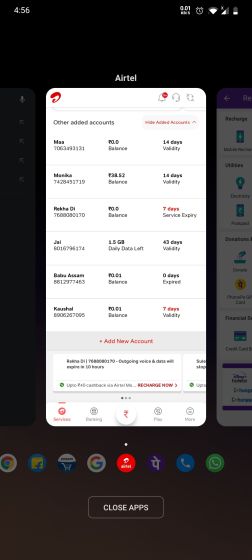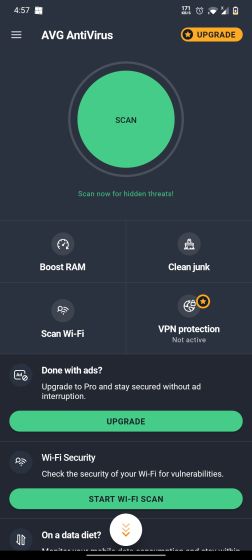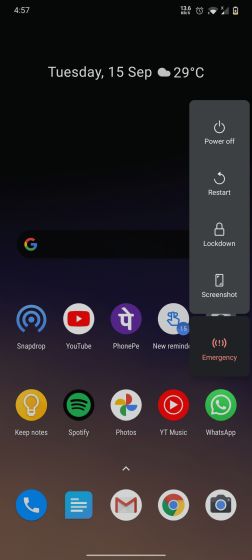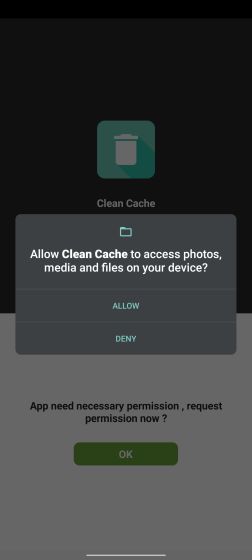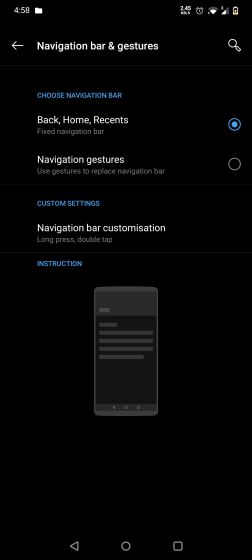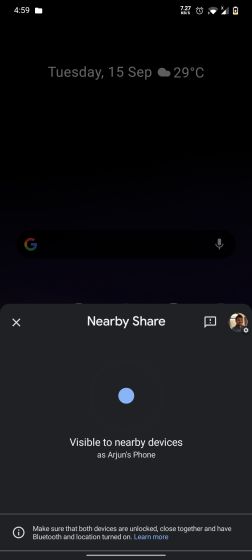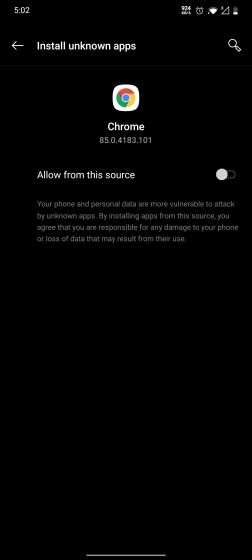Things You are Doing Wrong on Your Android Device in 2020
What You Should Not Do on Your Android Device
1. Killing Apps Manually or Using Task Killers
Using 3rd party task killer apps and killing apps through the recent apps button is something most of us do or have done in the past, without realizing that it might be worsening your Android device’s performance. Actually, these apps were useful for the Android versions of the past like Lollipop or KitKat. However, Android has evolved a lot and it’s now much more efficient when it comes to handling tasks running in the background.
In 2014, Google abandoned Dalvik which was used for memory allocation and brought a much-improved mechanism called ART (Android Run Time). ART uses ahead-of-time (AOT) compilation to manage the memory more efficiently while running in the background. By manually killing the apps, you are actually hindering ART to work properly. In fact, you are asking the OS to work more and that affects both performance and battery life. So, the bottom line is, only kill apps when they are misbehaving or draining too much battery and also, completely avoid the various task killer apps on the Play Store. This will ensure that your Android device performs much better.
2. Installing An Antivirus App
If you ask me honestly, I feel Android antivirus apps are not needed at all. These apps take a lot of resources on the phone and they keep running in the background which eats up considerable battery juice. The fact is, if you are installing apps from Play Store and no third party apps are side-loaded on your device, Google has you covered against any malware or viruses.
In 2018, Google introduced Play Protect which brought built-in malware protection on all Android devices. It uses Google’s machine learning algorithms to find suspicious apps and keep you away from such malware. To sum up, Android is quite secure now and you don’t need an antivirus to keep your device safe.
3. Using App Cleaners to Clear Cache
Using app cleaners once in a while is a good practice, but only if you have an older device running a dated version of Android and you have no space left on your internal storage. However, if you are using a modern Android device (Android 8 and above) with ample storage then you are better off leaving the cache as it’s. Cache data helps apps and services to run without any hiccups as the app data are locally fetched for quick access.
For instance, WhatsApp caches data like the profile picture of contacts and the media shared to make sure you don’t have to load it up every time you open the app. Therefore, to keep the apps on your smartphone snappy, stop deleting cache data. Also, the apps start rebuilding the cache again after you delete it, so you will be back to square one.
4. Keeping Battery Saver Mode On All the Time
I have encountered many Android users who keep the battery saver mode turned on all the time to save the juice, even when there is 90% battery left. This is not a good practice as it significantly hinders the proper working of Android. For instance, when battery saver mode is turned on, Android natively disables high-performing cores of the CPU.
Now when you do something intensive on your smartphone, your phone will only use the less-powerful cores which will result in slow performance, battery drain, and heating issue. Basically, the battery saver mode is doing more harm than good when you have ample juice left. So the bottom line is, only enable battery saver mode when you are down to 15% or 20% battery. Sure, when you are traveling and want to limit the background processes then you can turn on battery saving mode.
5. Not Rebooting Your Device
There’s still a lot of speculation behind this, but if you ask me, I think it’s a good idea to reboot your Android phone once in a while. Samsung has this feature since the S7 days and you can even schedule auto-restart on the latest One UI build. Clearly, there is something about Android that slows it down over time.
This will clear up unnecessary processes holding on to your memory and will give your device a fresh start. It is recommended that a reboot should be done once every week or once in a fortnight.
6. No Diligence While Granting Permissions
Many Android users grant all kinds of sensitive permissions to any app without diligently checking if the permission is needed by the app. For example, a photo-editing app does not need your contact or message permission. There are many such apps that abuse Android permissions mainly due to user’s lack of knowledge and what it can lead to.
So my recommendation would be to diligently check prompts before granting permissions. Apart from that, you can use an app called Bouncer ($0.99) which revokes permissions after you are done using the app. These kinds of healthy practices will make your Android experience more secure and private and you must inculcate these habits.
7. Using Default Apps
There are many instances where people use the default Android apps and most are either from Google or the device manufacturer’s Android skin. In my opinion, these default apps don’t necessarily offer the best experience and you should customize your Android smartphone to your own liking. For instance, SMS Organizer (Free) is a better text-messaging app than Google Messages. Similarly, there are many Android Launchers that offer endless customization. Also, you can find many useful Android apps from our video below.
8. Still Using the Button Navigation Bar
It has been two years since Google introduced the gesture system on Android, but users are still sticking to the old-school button navigation system. Sure, for some users, it works really well and they are accustomed to it. However, the new gesture system is really fun to use and you can get things done in a swipe.
Google has improved the gesture system even more in Android 10 and the latest Android 11 so there are more reasons for you to try the new way to navigation Android OS. I am hoping that you will give the gesture system a try.
9. Using Shady File-sharing Apps
Among the many apps on Android, file-sharing apps are pretty popular for sharing files and media across devices. To name a few, ShareIt, Xender et al rule this space and it seems users are not aware of better alternatives.
These apps show you all kinds of ads and have a clunky user experience. I would recommend you to use the new Nearby Share feature (works on Android 6 and above) or simply install the Files by Google app (Free). These are much better alternatives and you will have a seamless file sharing experience.
10. Sideloading Apps from Unknown Sources
The ability to sideload an app on Android devices is what makes it an open OS that can be tinkered with. It can prove to be a bane for many and boon for some. If you have the requisite knowledge and understanding of how Android works then you can go ahead and sideload apps from unknown sources. However, if you are unaware of the complexities behind the Android ecosystem then stay away from sideloading apps. It can prove to be more fatal than you can imagine, especially on older versions on Android.
So, make sure you only install apps from trusted sources (Like the Play Store) and don’t run towards apps that guarantee you unlimited lives or money in a game, as it is understood that these apps are the ones that carry malicious code. If Play Store is not available on your device then take a look at the top Play Store alternatives. We have mentioned only those sources which are secure and have stringent APK verification mechanism so you are safe to sideload apps from these sources.
Q. How Do I Completely Customize My Android?
As I have mentioned above, you should begin with changing default apps and then you can install a launcher of your choice. I have mentioned the link above so go through the article for more information.
Q. What is Bad About Android Phones?
When you compare Android phones with iPhones, you get a clear picture that privacy is the front where Android lags behind. It can bring much better and tighter privacy controls to protect the user. Apart from that, Android is quite fragmented even after Project Treble so on the updates front, it’s again miles behind iOS. If you buy an Android device other than Pixel then you are not going to get day-one updates.
Q. How Do I Make my Android Phone Run Smoother?
Nowadays, most Android phones come with a boatload of bloatware which is a major reason behind the stuttering and slow performance. If you are running MIUI then I would highly recommend you to uninstall bloatware from Xiaomi devices. As for other Android devices, go through our general guide to make your Android phone run smoother.
Q. How Can I Improve My Old Android Phone Performance?
If you are using an old Android device then make sure to uninstall unused apps so that you get ample storage. Next, you should limit the background process from Settings -> About -> Developer Options -> Background process limit -> Choose At most 1. Your Android device will run only one process at a time but keep in mind, this solution is only meant for older Android devices. Also, insert an SD card and offload the apps to the external storage.
Avoid These Things on Your Android Device
So these are some of the things that people tend to do wrong on their Android device and it reflects badly on the performance front. Currently, Android has improved by leaps and bounds and has matured as a modern OS. Simply put, these Android habits are a relic of the past and it would be better if you forget them. Anyway, that is all from us. If you think that we might have missed out on anything, please let us know in the comments section below and help us perfect the list of things we are doing wrong on Android.
